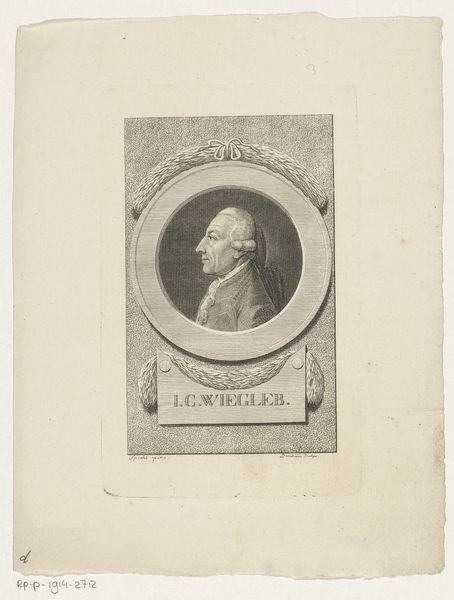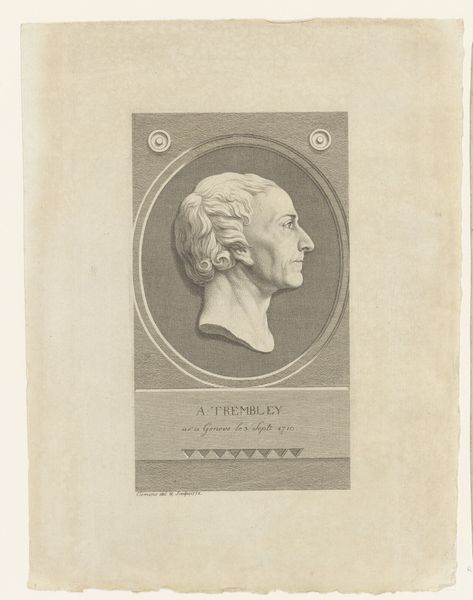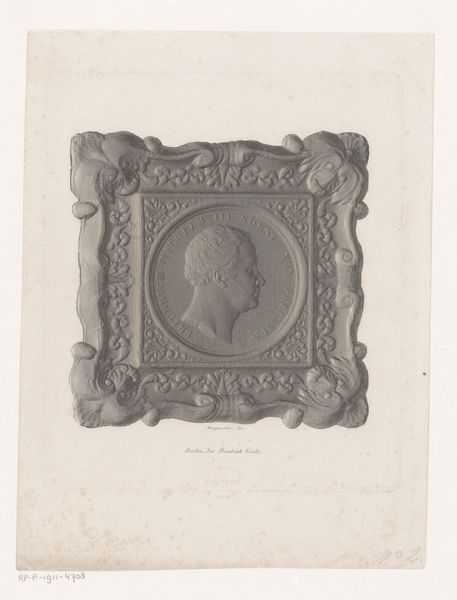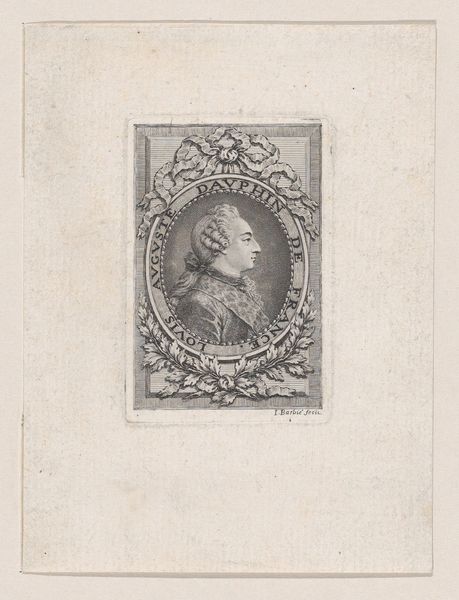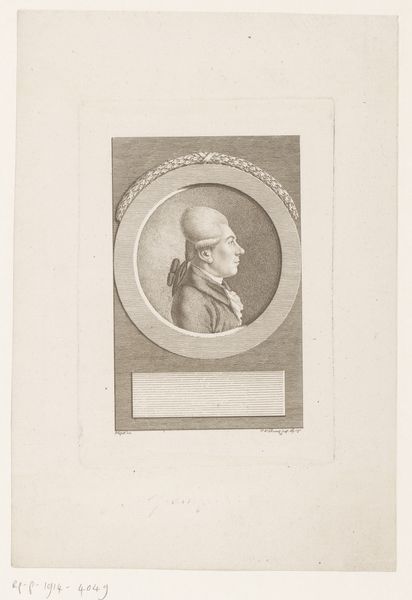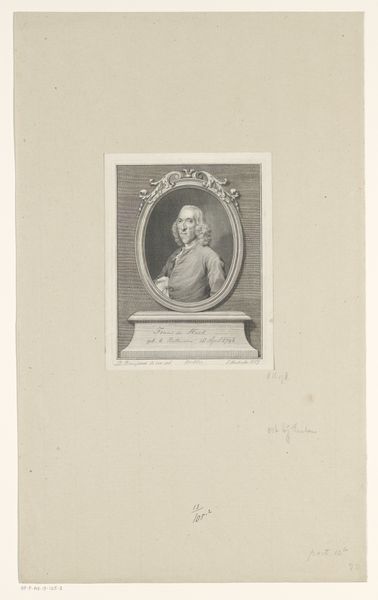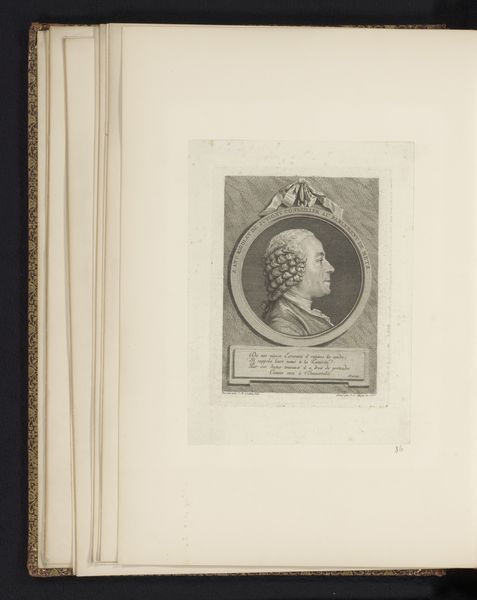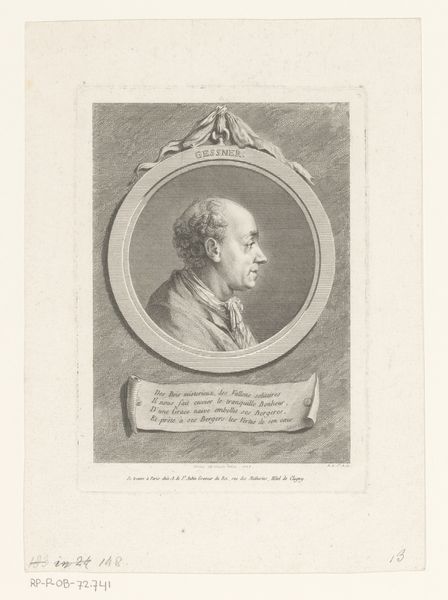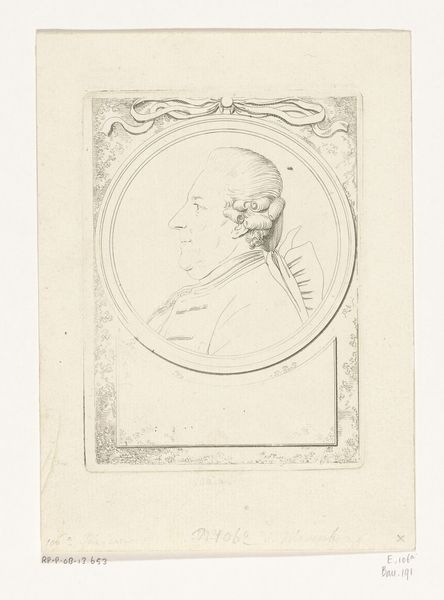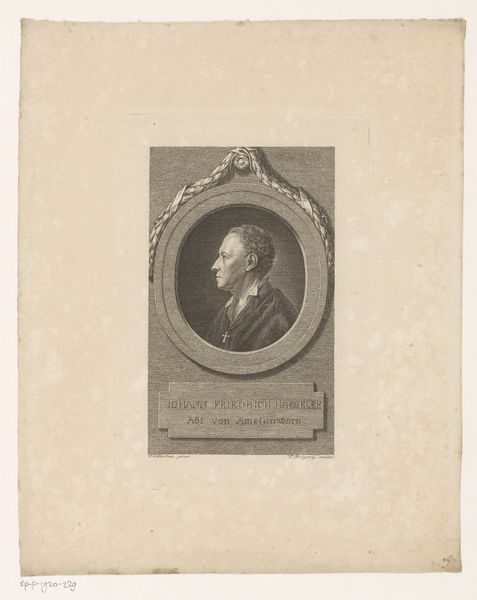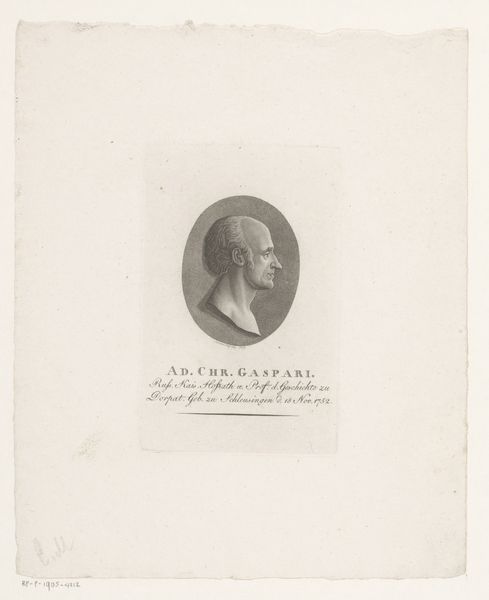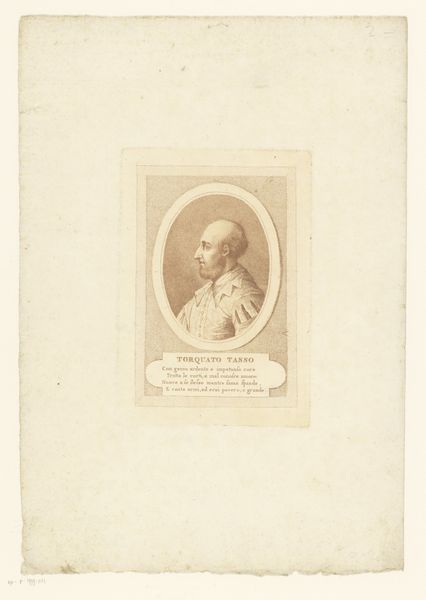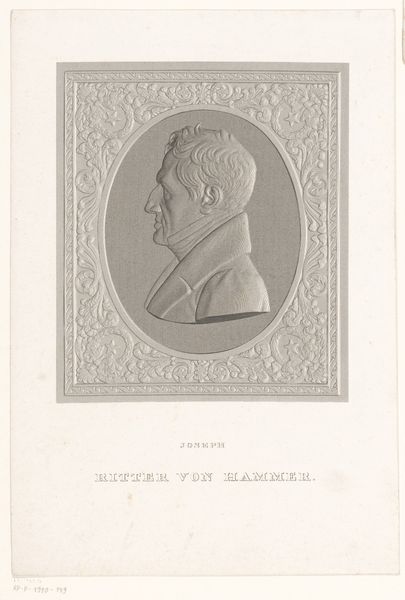
print, engraving
#
portrait
# print
#
old engraving style
#
form
#
classicism
#
embossed
#
line
#
history-painting
#
engraving
Dimensions: height 475 mm, width 356 mm
Copyright: Rijks Museum: Open Domain
Editor: Here we have an engraving, "Buste van Willem II, koning der Nederlanden" by Jan Dam Steuerwald, created sometime between 1840 and 1863. It’s… striking how formal and almost…stiff it feels, like a carefully constructed image of power. What do you see in this piece? Curator: I see a work deeply embedded in the political landscape of its time, and how images like this reinforced power structures. Think about the context: the Netherlands after the Napoleonic era, trying to establish a sense of national identity. Portraits like these weren’t just representations; they were tools. How do you see the use of classicism impacting the message? Editor: Well, the laurel wreath and the almost Roman-like profile definitely give a sense of timeless authority. Was it supposed to invoke that directly? Curator: Absolutely. Classicism was used deliberately to connect Willem II with ideals of leadership and stability. Consider who this image was intended for. Prints like these circulated widely. But what narratives are deliberately being erased here, in favour of presenting the king as the steadfast centre? How do you think about that now, regarding national identity? Editor: I hadn’t really considered that. It makes me think about what kind of power structures were normalized in the period and maybe also which parts of the history are often overlooked when telling a national story. Curator: Exactly. This image is powerful not just for what it shows, but also for what it conceals and promotes. So how does analysing art like this—engaging with these embedded biases and colonial overtones—alter the way we relate to leaders, past and present? Editor: This makes me realize that this isn’t just an image of a king but also an argument about power and national identity, one that still resonates. I’ll never look at another historical portrait the same way again.
Comments
No comments
Be the first to comment and join the conversation on the ultimate creative platform.
